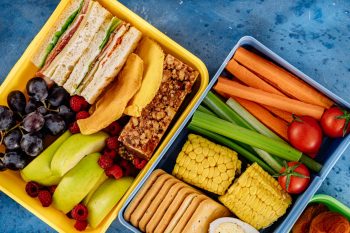Travel Light, Eat Right: A Senior’s Guide to BYO Meals

For older adults who enjoy exploring, keeping a nutritious menu in transit may feel quite daunting. Whether it’s a lengthy drive, a rail ride, or a plane trip to see relatives, the lure of junk meals and packaged treats appears constantly. Numerous older folks, even those residing in senior living residences, discover that regularly making their own travel meals keeps them aligned with crucial nutritional goals while also preserving funds.
Choosing Nutrient-Dense Foods for Travel
When preparing snacks, choosing nutrient-packed items guarantees you remain lively and content. Concentrate on meals abundant in protein, fiber, and beneficial fats, since those will maintain satiety for more time. Boiled eggs, nuts, and cheese sticks supply protein, whereas whole-grain tortillas and hummus supply fiber.
Raw fruits such as apples, bananas, and grapes serve as perfect portable treats without requiring cooling. When chilling is possible, yogurt and cottage cheese may be superb enhancements. Steer clear of salty or altered food that might cause puffiness or dryness, and choose vegetables brimming with water, like cucumber and peppers, to remain hydrated.
Packing Smart for Convenience and Safety
Ensuring correct wrapping keeps meals both appetizing and secure to consume. Employ insulated lunch bags and cold packs to maintain delicate foods at the ideal temperature. Single-serving boxes assist in keeping dishes neat and avert spills. When transporting warm dishes, a flask preserves soups or porridge at heat for hours.
Include cutlery, napkins, plus zipper pouches for straightforward management. For individuals flying, carefully review carrier rules regarding which edibles pass inspection, since certain fluids such as broths and yogurt might ultimately require eating prior to actual embarkation.
Best Meal Ideas for On-the-Go Eating
Balanced dishes keep trips easy and free of anxiety. A wheat-based poultry-and-cheese roll accompanied by a portion of small carrots consistently provides a quite hearty, convenient-to-consume choice. Quinoa salad featuring chickpeas, tomatoes, and olive oil travels nicely and contributes protein and fiber.
For the morning, soaked oats kept in a container with nuts and dried fruit yield a wholesome dish. DIY trail blend combining almonds, dark chocolate, and dried cranberries works as a munch replacement for chips or sweets. Maintaining meals plain yet truly pleasing helps one remain somewhat faithful to good dining practices even while traveling.
Staying Hydrated and Avoiding Unhealthy Temptations
Staying properly hydrated truly matters when journeying, especially for older individuals who often risk dryness. Bringing a refillable flask and drinking frequently supports both stamina and digestive comfort. Herbal brews and flavored water featuring lemon or cucumber truly offer substitutes for sweet drinks.
Limit heavy coffee and liquor, since they can eventually cause dryness. If quick-serve visits must happen, opting for grilled instead of battered fare, requesting salads with dressing aside, and skipping giant servings can significantly help uphold a daily healthy meal plan.
Conclusion
Preparing personal dishes during trips empowers older adults to savor wholesome fare instead of depending on poor or costly choices. With minimal planning, one can effortlessly produce tasty, balanced dishes that neatly match individual eating requirements and desires. Through careful organizing and conscious meal decisions, older folks can journey unburdened and dine properly, guaranteeing a stronger yet more delightful experience.

